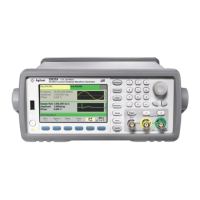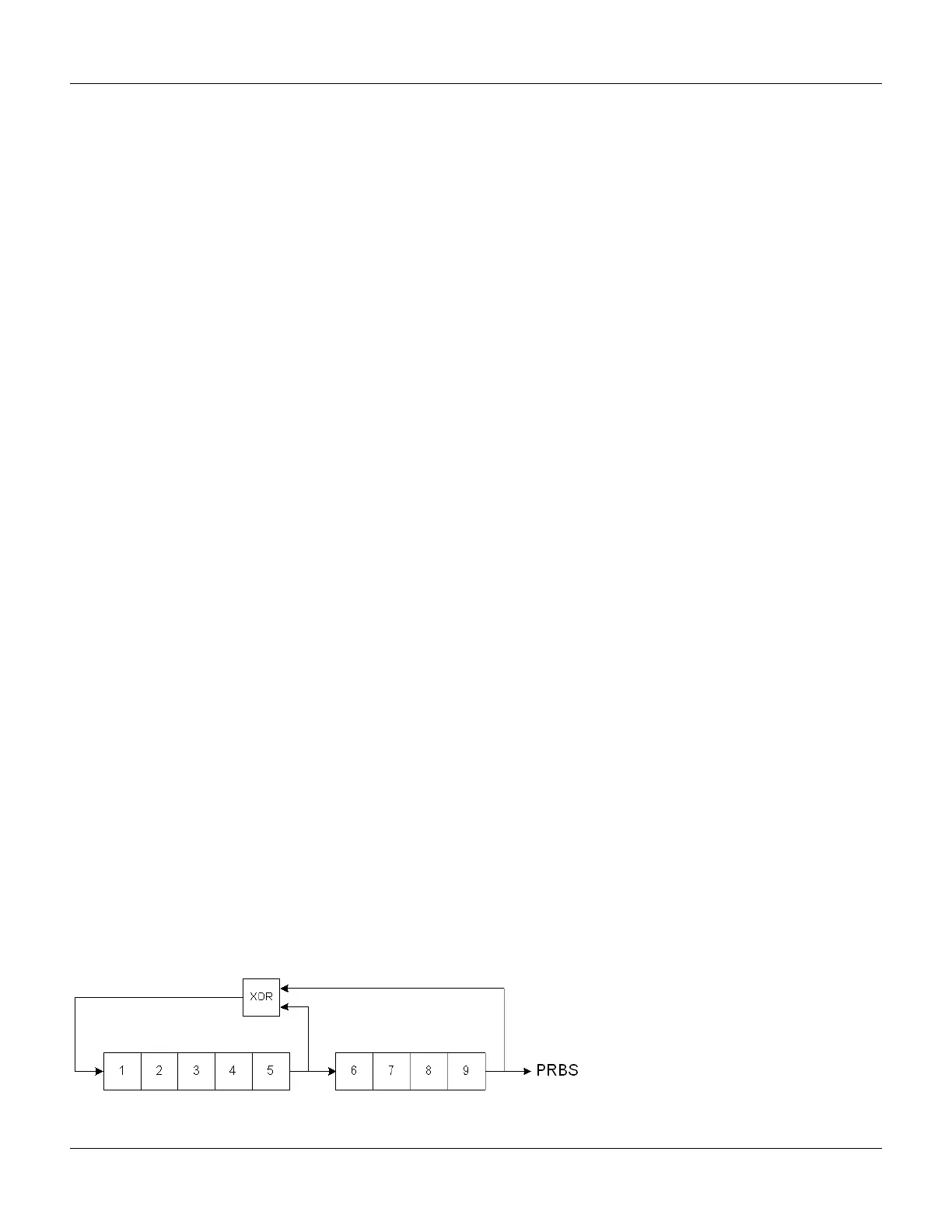Waveform Generation Tutorial
Each filter’s cutoff frequency is a fixed fraction of the waveform’s sample rate. The Normal filter’s response is -3 dB at
27% of the sample rate and the Step filter’s response is -3 dB at 13% of the sample rate. For example, for an arbitrary
waveform at 100 MSa/s, the Normal filter’s -3 dB frequency bandwidth is 27 MHz.
Waveform Sequencing
The instrument can assemble long, complex sequences of arbitrary waveforms (segments). Switching between seg-
ments occurs seamlessly in real time. As an analogy, think of segments as songs in a music player and sequences as
play lists.
Each sequence step specifies a segment and how many times it is played. It also specifies whether the sequence waits
for a trigger before the next step and how the Sync signal is generated on a step-by-step basis.
For each segment, you can either:
l play the segment from 1 to 1,000,000 times and then advance to the next step
l play the segment once and then stop and wait for a trigger before advancing
l repeat the segment until a trigger occurs and then advance
l repeat the segment until explicitly stopped
Options for Sync signal generation include:
l assert Sync at the beginning of the segment
l negate Sync at the beginning of the segment
l maintain the current Sync state throughout the segment
l assert Sync at the beginning of the segment and negate it at a defined point within the segment
Quasi-Gaussian Noise
The Noise waveform is optimized for both quantitative and qualitative statistical properties. It does not repeat for more
than 50 years of continuous operation. Unlike a true gaussian distribution, there is zero probability of getting a voltage
beyond the instrument’s Vpp setting. The crest factor (peak voltage divided by RMS voltage) is approximately 4.6.
You can vary the Noise bandwidth from 1 mHz to the instrument's maximum bandwidth. The energy in the noise sig-
nal is concentrated in a band from DC to the selected bandwidth, so the signal has greater spectral density in the band
of interest when the bandwidth setting is lower. In audio work, for example, you might set the bandwidth to 30 kHz, to
make the audio band signal strength 30 dB higher than if the bandwidth were set to 30 MHz.
PRBS
A Pseudo-Random Bit Sequence (PRBS) has two levels (high and low), and it switches between them in a manner that
is difficult to predict without knowing the sequence generation algorithm. A PRBS is generated by a linear-feedback
shift register (LFSR), shown below.
Agilent 33500 Series Operating and Service Guide 141

